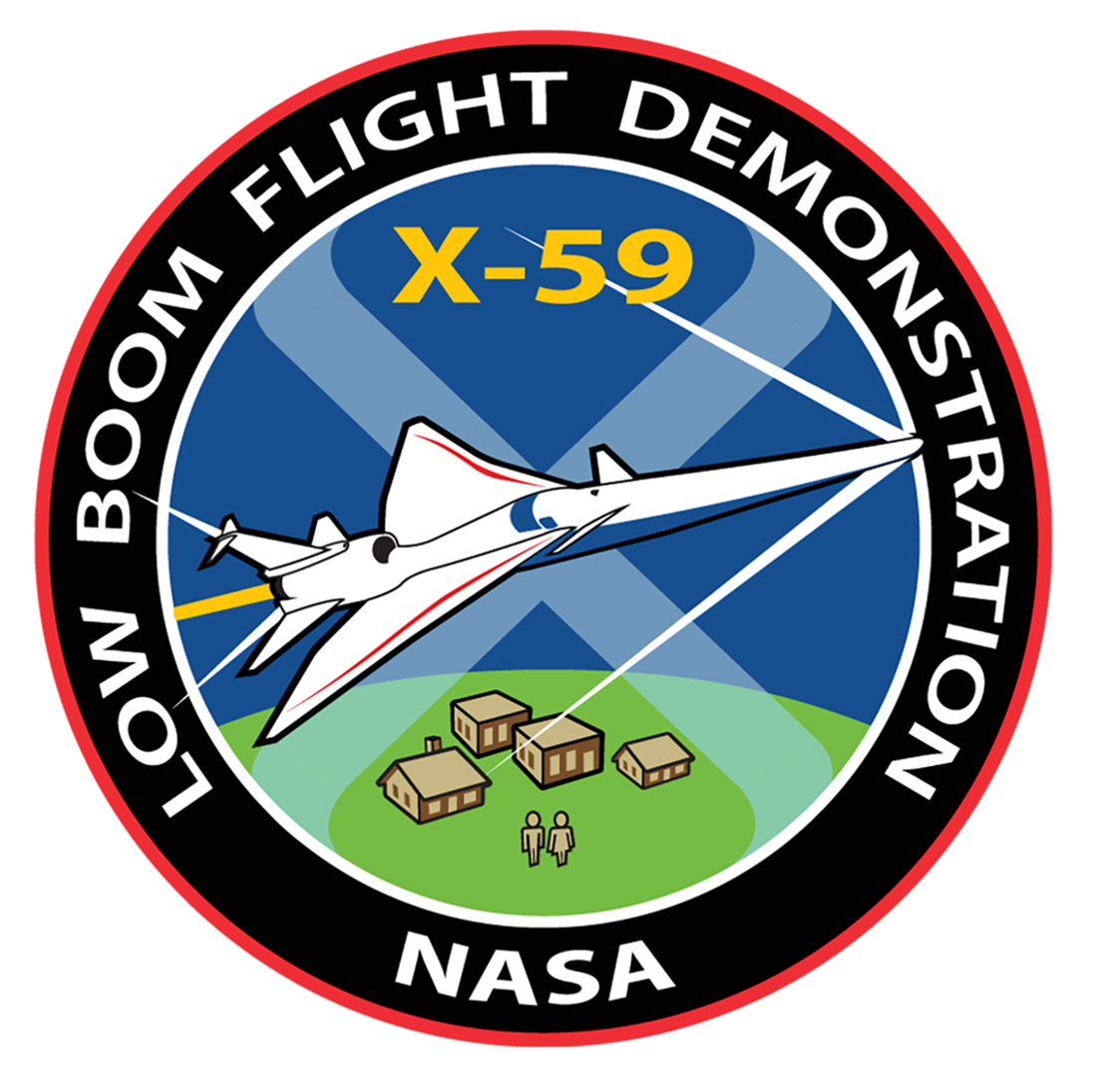NASA's Quiet Supersonic X-Plane Has a New Name

NASA's experimental supersonic X-plane project has a new name: the X-59 QueSST.
So, what's in the name? Well, the "X-59" part is a nod back to American X-plane history, which kicked off with the world's first supersonic plane, the Bell X-1, famously piloted by Chuck Yeager in 1947 when it broke the speed of sound. Yeager nicknamed the plane "Glamourous Glenis" after his wife, according to NASA. The "QueSST" part of the X-59 moniker is sort of a NASA inside joke, one that acknowledges the space agency's long-running quest (get it?) for quiet supersonic technology, or SST.
The U.S. Air Force assigned the X-59 number to NASA's experimental supersonic plane and let the agency know on Tuesday, NASA officials said in a statement Wednesday (June 27). Before receiving its X number, NASA's supersonic plane project was called the Low-Boom Flight Demonstration mission. Lockheed Martin is building the jet for NASA to develop the technology needed for quiet supersonic aircraft for future commercial travel. [In Photos: Amazing X-Planes Through the Years]
"For everyone working on this important project, this is great news and we're thrilled with the designation," Jaiwon Shin, associate administrator for NASA's Aeronautics Research Mission Directorate, said in the NASA statement.
The X-59 QueSST supersonic plane was included in the White House's 2019 budget request for NASA earlier this year as part of a $633.9 million funding proposal for aeronautics research. But NASA has been developing the supersonic plane for years in pursuit of technology that would enable affordable supersonic transportation without the loud sonic booms that come with it.
Two other private projects are considering commercial supersonic travel as well. Virgin Galactic and Boom Technology are working together to build a supersonic jet capable of flying at twice the speed of sound — about 1,451 mph (2,335 km/h) — to cut the travel time from New York City to London down to 3 hours. Another company, Spike Aerospace, is developing its own S-512 Quiet Supersonic Jet, which would have similar performance. That New York-to-London trip typically takes up to 7 hours.

The most recent age of commercial supersonic air travel began in 1976 with the Concorde, an aircraft operated by British Airways and Air France. After a fatal crash in 2000, the last Concorde flew in 2003.
Get the Space.com Newsletter
Breaking space news, the latest updates on rocket launches, skywatching events and more!
The Russian airline Aeroflot also flew commercial supersonic flights using the Tupolev Tu-144 aircraft. Commercial Tu-144 flights began in 1977 and ended in 1978 due to technical issues, according to NASA. The U.S. space agency used a modified version of the Tu-144, called the Tu-144LL, for research flights between 1998 and 1999, when the Tu-144 made its final flight.
Email Tariq Malik at tmalik@space.com or follow him @tariqjmalik. Follow us @Spacedotcom, Facebook and Google+. Original article on Space.com.
Join our Space Forums to keep talking space on the latest missions, night sky and more! And if you have a news tip, correction or comment, let us know at: community@space.com.

Tariq is the Editor-in-Chief of Space.com and joined the team in 2001, first as an intern and staff writer, and later as an editor. He covers human spaceflight, exploration and space science, as well as skywatching and entertainment. He became Space.com's Managing Editor in 2009 and Editor-in-Chief in 2019. Before joining Space.com, Tariq was a staff reporter for The Los Angeles Times covering education and city beats in La Habra, Fullerton and Huntington Beach. In October 2022, Tariq received the Harry Kolcum Award for excellence in space reporting from the National Space Club Florida Committee. He is also an Eagle Scout (yes, he has the Space Exploration merit badge) and went to Space Camp four times as a kid and a fifth time as an adult. He has journalism degrees from the University of Southern California and New York University. You can find Tariq at Space.com and as the co-host to the This Week In Space podcast with space historian Rod Pyle on the TWiT network. To see his latest project, you can follow Tariq on Twitter @tariqjmalik.









